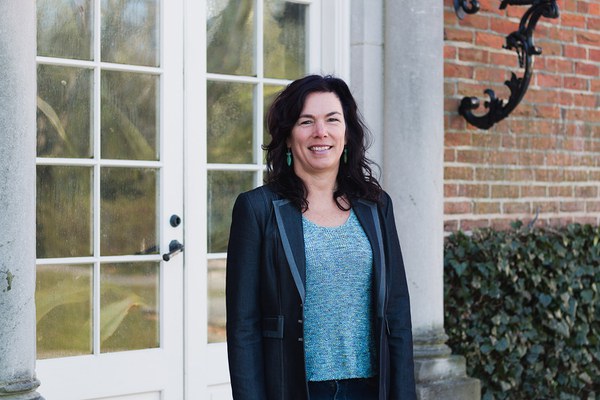Traci Ardren, professor of anthropology at the University of Miami, was a recent fellow in Pre-Columbian Studies. Her research report, “Go in Pairs, Intertwined: Soft Technologies and the Role of Plants in Classic Maya Identity,” looked at plants as agents that shaped Maya knowledge and culture.
Q&A with Traci Ardren
Why were plants important to the Maya?
Maya society was extremely dependent on the plant world. People in the Classic Maya period did not use metals and or have domesticated animals. Pottery was widely available, but relatively heavy and a precious material. So, from art, excavated data, and 16th-century Spanish descriptions, we’re pretty confident that a huge number of Maya household goods were made from plant fibers.
Today you can still see some of those arts and crafts. Maya people still make nets from twine and other plant fibers to carry large numbers of objects. They use gourds for carrying water during the day—gourds are the original water bottle. You will still see lots of woven mats, woven baskets and containers, things that were used daily in the ancient period.
You gave the example of thatch. What makes thatch so special?
There is a round bowl in the Dumbarton Oaks collection carved to show trimmed thatch. These bowls are the fancy, elite ceramics of the Late Classic period in the northern Maya lowlands (now parts of Yucatan, Campeche, and Quintana Roo in Mexico). Everybody talks about their geometric designs as reflecting textiles or other kinds of woven plant-based cloth technology.
Before I got here, I hadn’t given the thatch part of these vessels a lot of consideration. When I saw the piece in the museum, it got me thinking how important thatch was to the Maya, to be included on these kinds of elite vases. All Maya cities were covered with thatched roofs. The top 1% of the population lived in stone-roofed rooms, but even some elites had thatched roofs, which provided more airflow and light.
Thatch was a really important economic commodity that hasn’t been considered in a lot of models. Even though Maya archaeologists have a working assumption that the buildings were thatched, and even though a lot of us live in thatched buildings when we’re in the field, we’re not responsible for obtaining that thatch or repairing those roofs. I don’t think the field has really considered the economics of that process.
In writing about a Classic Maya site called Chunchucmil, I learned just how important thatch was. Chunchucmil is inland from a major saltworks, and our research focused on that saltworks as an explanation for how people could live in this area, which has very dry, poor soil. Chunchucmil was an immense city, 60,000 to 80,000 people. It was a puzzle: how were people feeding themselves?
Moving back and forth from the city to the saltworks required that people pass through a savanna. I started thinking about the various commodities they could have accessed there: dyewood, jaguar pelts, and thatch being maybe the number one item. In addition to bringing back salt, city dwellers might have been bringing back these important palm fronds. I estimated that to thatch all the roofs in that city would have taken 32 million leaves, multiplied by hundreds of years. Access to thatch in the savanna helped diversify the economic base of that city.
The Plant Humanities Initiative looks at how plants shape human society. How does that perspective strengthen Maya research?
The wonderful thing about the Plant Humanities Initiative is that it shifts focus from how humans have innovated with plants to how stimuli from the plant world have changed human behavior. Maya people subsisted primarily on plant foods—staples like corns, beans, and squash, and supplementary foods they grew right next to the house: fruit trees like papaya or guava, culinary herbs like epazote, peppers, different kinds of spices. People had to plant, tend, harvest, weed, and water those crops.
In an agricultural society, tending plants and having success was much more highly charged than we in the industrialized world can imagine given our experiences today. You have to respond when plants demand things. When you’re tending a chile habanero, it has very specific watering needs. Then the plant itself has risks: the peppers are beautiful but very spicy and potentially dangerous to children. That knowledge base was picked up through experience and apprenticeship.
The plant agency framework creates intellectual space for thinking about the needs of plants and how they have shaped humans’ daily habits. Many studies of ancient Maya culture focus on how the elites spent a lot of time building pyramids and writing books. But we don’t have much detail about what the vast majority of the population did with their time. We know they had to produce a lot of food for everybody, so they were going out to the fields to farm, or going into the forest to harvest, or tending gardens. Knowing about plant biology and ecology helps us understand the lives of the people who were doing all the work.
Julia Ostmann is postgraduate writing and reporting fellow at Dumbarton Oaks. Photo by Elizabeth Muñoz Huber, postgraduate digital media fellow.

